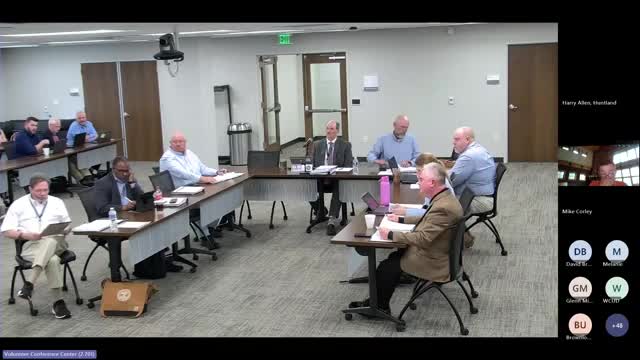Utility Board Faces Backlash Over Leak Adjustment Policy
July 19, 2024 | Comptroller of the Treasury, Agencies, Boards, Commissions, and Councils, Organizations, Executive, Tennessee

This article was created by AI summarizing key points discussed. AI makes mistakes, so for full details and context, please refer to the video of the full meeting. Please report any errors so we can fix them. Report an error »

During a recent government meeting, significant concerns were raised regarding the leak adjustment policies of a local utility district, particularly in relation to customer billing and support for leak repairs. The discussions highlighted confusion over the utility's existing policies and the adequacy of support provided to customers facing high water bills due to leaks.
A key point of contention was the utility's leak adjustment policy, which some board members questioned as being insufficiently documented and unclear. A representative from the utility, Jim Lawson, attempted to clarify that their policy does provide financial assistance for leaks, covering up to $25,100 for water bills associated with leaks, and an additional $10,000 for repair costs. However, it was noted that this assistance is contingent upon customers opting into a specific insurance program, which has led to misunderstandings among customers about their options.
One customer, Ms. Lawson, expressed frustration over her unresolved billing issues and the lack of clear communication from the utility. She highlighted that despite receiving some financial assistance, she still faced a significant outstanding balance on her water bill. Ms. Lawson called for a more transparent and comprehensive leak adjustment policy, arguing that the current system does not adequately address the needs of customers who experience significant water loss due to leaks.
Board members acknowledged the need for clearer policies and better communication from the utility to ensure customers understand their rights and options. They discussed the possibility of recommending that the utility district strengthen its leak adjustment policy to better serve the community. However, they also recognized the limitations of their authority in mandating specific changes.
The meeting underscored the importance of effective communication and robust policies in utility management, particularly as customers navigate the complexities of billing and leak repairs. The board's discussions may lead to further scrutiny of the utility's practices and potential recommendations for improvement in the future.
A key point of contention was the utility's leak adjustment policy, which some board members questioned as being insufficiently documented and unclear. A representative from the utility, Jim Lawson, attempted to clarify that their policy does provide financial assistance for leaks, covering up to $25,100 for water bills associated with leaks, and an additional $10,000 for repair costs. However, it was noted that this assistance is contingent upon customers opting into a specific insurance program, which has led to misunderstandings among customers about their options.
One customer, Ms. Lawson, expressed frustration over her unresolved billing issues and the lack of clear communication from the utility. She highlighted that despite receiving some financial assistance, she still faced a significant outstanding balance on her water bill. Ms. Lawson called for a more transparent and comprehensive leak adjustment policy, arguing that the current system does not adequately address the needs of customers who experience significant water loss due to leaks.
Board members acknowledged the need for clearer policies and better communication from the utility to ensure customers understand their rights and options. They discussed the possibility of recommending that the utility district strengthen its leak adjustment policy to better serve the community. However, they also recognized the limitations of their authority in mandating specific changes.
The meeting underscored the importance of effective communication and robust policies in utility management, particularly as customers navigate the complexities of billing and leak repairs. The board's discussions may lead to further scrutiny of the utility's practices and potential recommendations for improvement in the future.
View full meeting
This article is based on a recent meeting—watch the full video and explore the complete transcript for deeper insights into the discussion.
View full meeting
